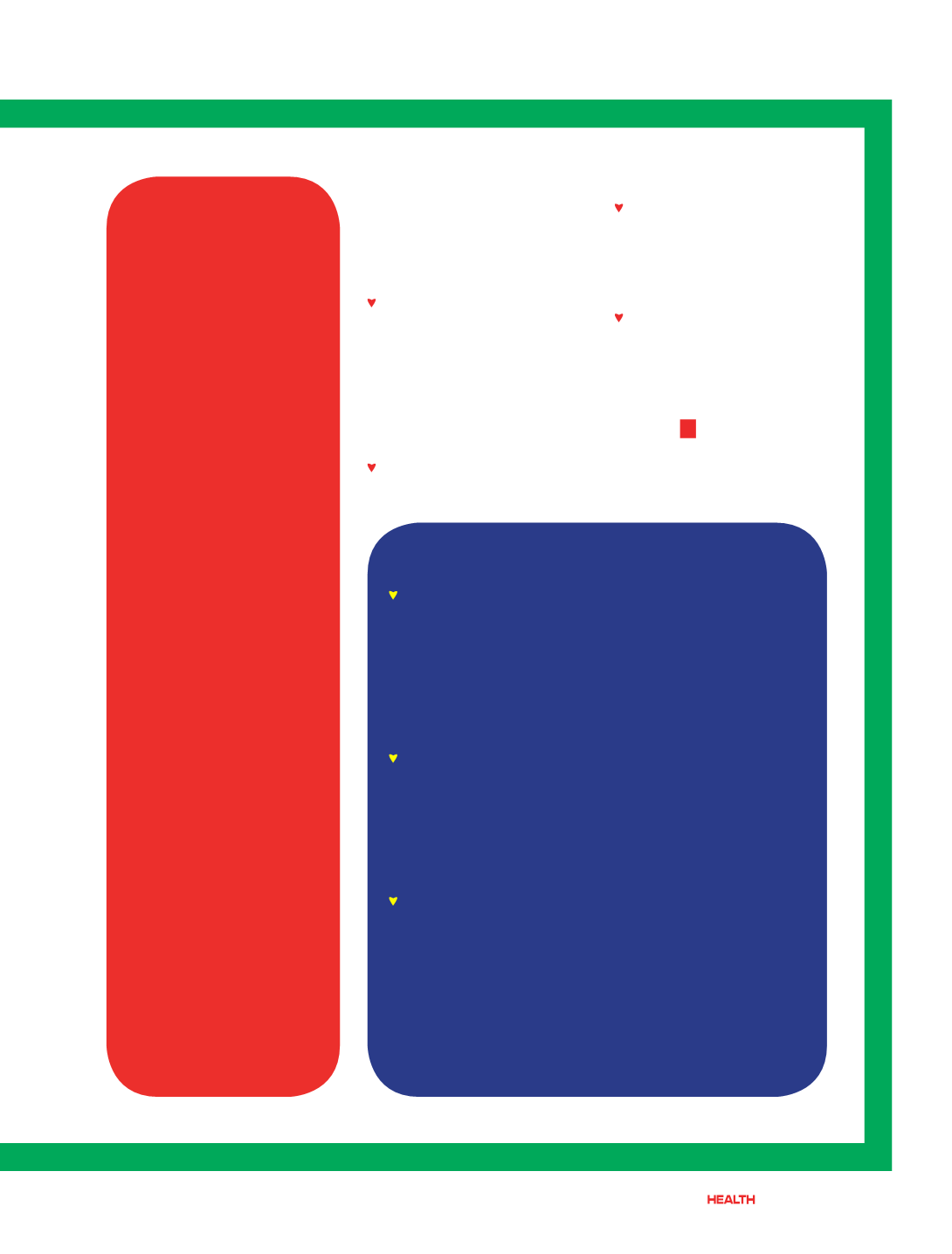

“Small steps taken every
day can help you regain
control of your heart
health,”Dr. Thoppil
explains. Some of these
steps include:
Firstly, aim to be physically
active for 20 to 30 minutes a day,
even if it’s just going to a walk or
run. If you find that too much,
or you’re not used to being
physically active, start with five
minutes and gradually build it
up by taking the stairs whenever
you can.
Remember, it is important to
consult your doctor before
Understanding
the Symptoms
More than one in
three adults has some
form of cardiovascular
disease. The good
news is 80 percent
of heart disease
and stroke can be
prevented. By having
a clear understanding
of the risk factors
involved and being
aware of what signs
to watch out for,
Dr. Paul Thoppil,
Interventional
Cardiologist/
Electrophysiologist,
at NMC Specialty
Hospital Abu Dhabi
explains that you
are helping yourself
avoid needless stress.
“Common symptoms
include chest pain or
shortness of breath,”
he says “if you feel
something is wrong,
it is important to
schedule a doctor’s
appointment as soon
as possible to avoid
any unnecessary
complications. “
beginning an exercise program.
If you smoke, quit as soon as
you can – it halves your risk of
another heart attack. Talk to
your doctor about getting help
to quit and go to a smoking
cessation clinic for advice.
Taking control of your diet
is one of the most important
steps you will take to manage
your heart health – avoid high
cholesterol foods, which are a
primary risk factor for heart
disease.
(Credit: Dr. Paul Thoppil)
How to Choose Foods that Lower Cholesterol
Avoid saturated or trans fats.
Foods containing high
levels of saturated fats or trans fats-such as potato
chips -can increase your cholesterol levels much more
significantly than cholesterol- containing foods such
as eggs. Saturated fat and trans fat both increase LDL
(“bad”) cholesterol. Trans fat lowers your levels of HDL
(“good”) cholesterol, which can put you at increased
cardiovascular risk.
Make smart choices.
Choose foods rich in unsaturated
fats, fiber, and protein. Fruits, vegetables, fish, beans,
nuts, and seeds are all great cholesterol regulators. The
best foods for lowering cholesterol are oatmeal, fish,
walnuts (and other nuts), olive oil, and foods fortified
with sterols or stanols-substances found in plants that
help block the absorption of cholesterol.
Remember that labels can be deceiving.
Navigating
food labels can often be complicated since packaged
foods with labels like “cholesterol free” or “low
cholesterol” aren’t necessarily heart-healthy; they might
even contain cholesterol that’s heart-risky. Stick to
basics whenever possible: fruit, vegetables, nuts, and
lean proteins.
(www.helpguide.org)
H
21
Mar/Apr 2015

















